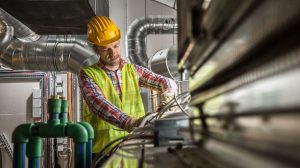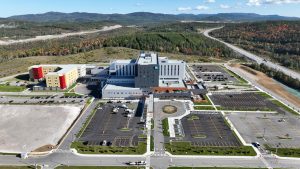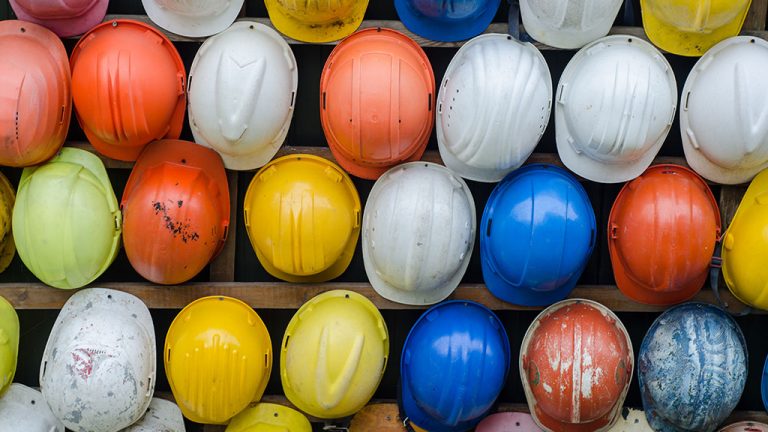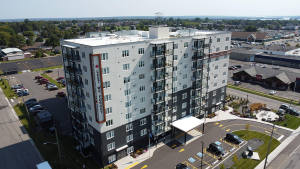Leadership in Energy and Environmental Design (LEED) v4 project registrations have surpassed the 1,000 mark in Canada, demonstrating strong support for the system in the country, says Peter Whitred, senior manager, green building programs, Canada Green Building Council (CaGBC).
Green Building Certification Inc. Canada (GBCI CA) and CaGBC announced achieving the milestone recently. Used in 160 countries, LEED is the most widely used green building rating system in the world with the goal of addressing climate change and creating buildings that are more resource-efficient, healthy and resilient.
“Ultimately it’s a very strong showing for LEED in Canada and the markets continued uptake of the rating system,” said Whitred.
“It demonstrates that Canada continues to be a leader in LEED. We are one of the top countries in the world for having LEED projects both registered and certified. The V4 and V4.1 program is on par with registration rates of previous programs and that really demonstrates that LEED continues to play an important role within the Canadian industry and there is still a lot of interest and buy-in especially from owners related to not only the environmental benefits that LEED provides through energy and carbon reduction but also the holistic approach that LEED takes reducing water, improving indoor air quality and focusing on the materials that we put into our buildings.”
Canada has consistently ranked among the top countries LEED adoption, explained Whitred, adding as of this fall, Canada has achieved over 4,350 LEED certifications overall and is a world leader in the adoption of the latest version of LEED.
“Whereas some other standards simply focus on energy, water or waste, LEED takes a look at everything so what building owners are getting is a high quality, sustainable building that is good for the environment, good for their occupants and good for the bottom line because ultimately having a more efficient building will reduce operational costs,” he said.
Of Canadian LEED v4 projects, almost half are commercial and institutional new construction, with Ontario leading the way regionally with 27 per cent of projects, followed by British Columbia at 17 per cent and Alberta at 15 per cent.
New homes account for a quarter of LEED v4 projects, with Quebec’s very early adoption of LEED v4 for home construction resulting in a full 74 per cent of home projects coming from that province, a release indicates.
Existing buildings are a growing segment of LEED v4 registrations accounting for a quarter of total LEED v4 projects, said Whitred, adding large commercial owners are leveraging LEED v4.1 operations and maintenance to help them meet their sustainability goals and speed up the recertification process.
“V4 pushed the envelope increasing the stringency of standards relating to energy, water, materials and indoor air quality,” said Whitred. “More recently, as of January of this year, version 4.1 came out. We recognize that the industry is continuing to evolve and so in some ways the version 4.1 allowed the standard to become more flexible for owners in how they demonstrate the great work they do, it allows it to become more streamlined, in many cases reducing the overhead that would be required for owners.”
It also has a large focus on carbon which is especially important to the Canadian market.
“It specifically targets carbon related to operational emissions and continues to evolve to make sure that we are on the path towards reducing our environmental impact while maintaining the high levels of satisfaction that occupants of these buildings will achieve,” added Whitred.
Whitred said CaGBC listened to the stakeholders and incorporated principles in the newest versions of LEED.
“CaGBC is a member driven organization and so the feedback that we get from our members and the industry helps to let us know what is important and where we should be focusing on,” he noted.
“We are working on behalf of the Canadian industry to help to develop alternative compliance paths specific to the Canadian market. We are working with the USGBC to get some of those things together to really represent our members.”
The CaGBC reached another milestone Nov. 27 with the first 10 certifications under the Zero Carbon Building Standard. To date, 20 projects are registered.
The standard, which was introduced two years ago, was designed to guide the industry in building to zero and help Canada meet its international emissions targets by 2030.
A carbon metric recognizes the true climatic impact of a building and brings to light aspects not considered by energy efficiency, including the importance of selecting low-carbon construction materials and energy sources for building operations, states a release.
Follow Angela Gismondi on Twitter @DCN_Angela.











Recent Comments
comments for this post are closed